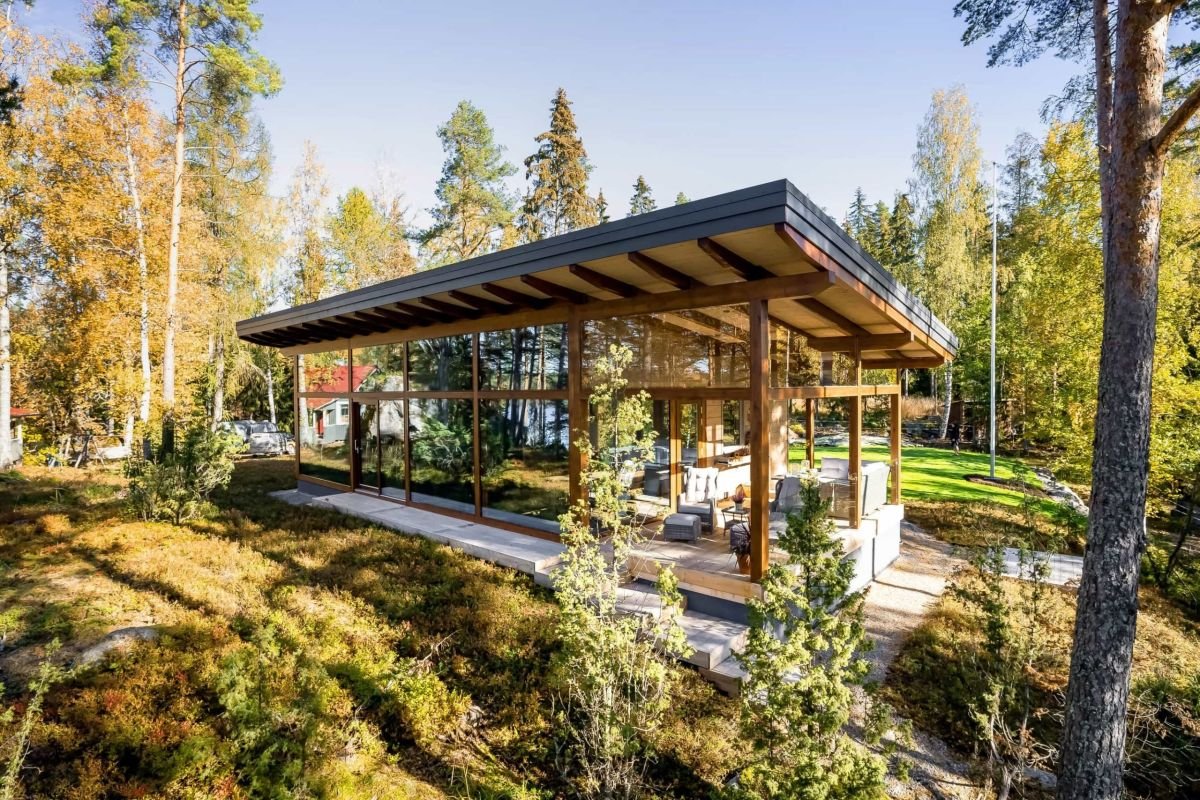A Scandinavian look house typically refers to a style of home decor and design that originates from the Nordic region, which includes Denmark, Norway, Sweden, Finland, and Iceland. The style is characterized by simplicity, functionality, and a focus on natural materials and light colors.
In terms of architecture, Scandinavian homes often have a minimalist and modern design, with clean lines and a focus on functionality. They may feature large windows that allow for plenty of natural light, as well as natural materials such as wood, stone, and concrete.
When it comes to interior design, a Scandinavian look house is typically characterized by a neutral color palette, with shades of white, gray, and beige being common. Furniture is often simple and functional, with a focus on comfort and practicality. Textiles such as wool, cotton, and linen may be used to add warmth and texture to the space.
Overall, the Scandinavian look house is a style that emphasizes simplicity, functionality, and natural materials, and it has become increasingly popular around the world in recent years.
Scandinavian Style Savant covers all Scandinavian look houses from 1900
The Scandinavian design style has become a global phenomenon, known for its simplicity, functionality, and minimalism. It has influenced the world of interior design and architecture for over a century, with its roots tracing back to the early 20th century.
To celebrate this iconic design style, the Scandinavian style savant has decided to cover the Scandinavian-style houses from 1900-2010, one decade a week. This will be a journey through the evolution of the Scandinavian design style and its influence on modern design.
Starting from the 1900s, the Scandinavian style savant has explored the design elements that characterized the architecture of this era, including the use of natural materials such as wood and stone, the focus on functionality, and the simplicity of design.
1900s, Photo by Hotel Diplomat
Moving into the 1910s, the focus shifted to the introduction of the Art Nouveau style and how it influenced Scandinavian architecture. The use of curved lines and organic shapes will be explored, as well as the incorporation of colorful stained glass and intricate metalwork.
1910s, Photo by Kristoffer Ärnback, Leksands Kommun
The 1920s was covered last week with its Symmetrical Facades and Swanky Interiors and the 1930s will be covered in the subsequent week, where the Scandinavian style savant will examine how the design style evolved during the interwar period. The introduction of modernist design and the Bauhaus movement will be explored, as well as the use of concrete and steel in architecture.
1920s, Gunnar Asplund, Stockholm Public Library, ph. Fabien Bellat
The post-war period of the 1940s and 1950s will be covered in the following weeks, where the Scandinavian style savant will examine the impact of functionalism and the modernist movement on Scandinavian design. The use of light colors, clean lines, and natural materials will be explored, as well as the incorporation of mid-century modern furniture.
Moving into the 1960s, the Scandinavian style savant will explore the introduction of Scandinavian pop art and how it influenced design during this era. The use of bold colors, geometric shapes, and playful patterns will be examined.
The following decades, including the 1970s, 1980s, 1990s, and 2000s, will also be covered in subsequent weeks, exploring how the Scandinavian design style continued to evolve and influence modern design.
Overall, this journey through the evolution of Scandinavian design will provide a fascinating insight into the iconic design style that has become so popular around the world today. Each decade will offer unique design elements and inspirations that have shaped the Scandinavian design style we know and love today.




